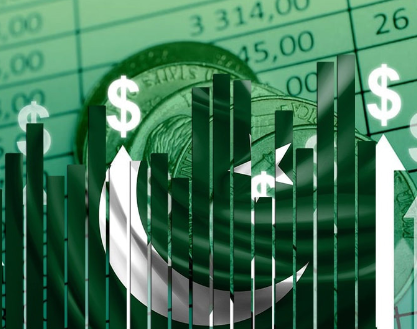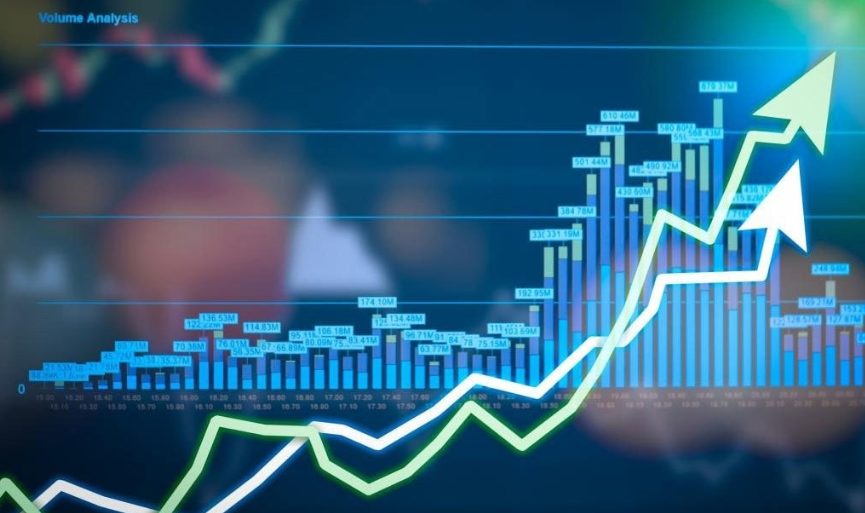Recent measures taken by the caretaker setup to curb smuggling and crackdown on exchange companies have resulted in the strengthening of the exchange rate. Now, after a prolonged period, the US dollar is trading at less than Rs280, and there is a sense of improvement in the economy. Notably, one of the main reasons the caretaker government has been able to stabilise the dollar is the existence of an IMF deal, the Stand-By Arrangement, which was finalised due to the relentless efforts of Prime Minister Mian Muhammad Shehbaz Sharif. The Pakistan Democratic Movement (PDM) government led by Mian Shehbaz Sharif, instead of pursuing temporary feel-good factors like reducing utility or petroleum prices or announcing an amnesty, practised fiscal discipline and ensured that commitments made with the IMF were upheld. This commitment is crucial for the stability of Pakistan’s economy.
In contrast, when the PTI government, led by Imran Khan, faced a no-confidence motion, it implemented policies that created hurdles and laid landmines for the country’s economy. PTI chairman reduced utility and petroleum prices and announced an industrial amnesty scheme without having the fiscal space, increasing the fiscal deficit, which sabotaged the IMF deal. This ultimately exacerbated the dollar liquidity crisis, as evidenced by falling reserves which started from August 2021 until the removal of the PTI government in April 2022, scrapping the IMF deal. The net result of PTI’s manipulation was that Pakistan came to the brink of economic collapse. A responsible transition by the PDM government to a caretaker setup has allowed for recent improvements in the economy as macroeconomic indicators begin to stabilise. Moving forward, it is essential to adhere to the Stand-By Arrangement with the IMF.
One of the main reasons the caretaker government has been able to stabilise the dollar is the existence of an IMF deal, the Stand-By Arrangement, which was finalised due to the relentless efforts of Prime Minister Mian Muhammad Shehbaz Sharif
 The upcoming government would face numerous challenges. Unfortunately, politics has become a zero-sum game as it is inherently tied to the economy in the final analysis. Politics serves as the mechanism for distributing economic resources among various sectors of society. It is the responsibility of the political class to consider the people’s plight when making decisions about resource allocation. However, in the process, such decisions can often cause discontent among those who bear the tax burden or whose privileges are impacted by the redirection of resources towards the less privileged. In this regard, the PML-N’s priority has always been to give organic relief to the downtrodden sections of society by controlling inflation and creating job opportunities.
The upcoming government would face numerous challenges. Unfortunately, politics has become a zero-sum game as it is inherently tied to the economy in the final analysis. Politics serves as the mechanism for distributing economic resources among various sectors of society. It is the responsibility of the political class to consider the people’s plight when making decisions about resource allocation. However, in the process, such decisions can often cause discontent among those who bear the tax burden or whose privileges are impacted by the redirection of resources towards the less privileged. In this regard, the PML-N’s priority has always been to give organic relief to the downtrodden sections of society by controlling inflation and creating job opportunities.
For any government, introducing economic reforms that evoke stiff resistance from the targeted sectors is a formidable task. It is particularly difficult for an outgoing government trying to secure votes in the next elections. For example, bringing the retail sector into the tax net during the last year of a government’s term increases the likelihood of opposition from individuals associated with the retail sector, as the benefits of the additional tax collection take time to materialise. It is more effective to introduce such reforms during the initial years of a government’s term when there is ample time for both implementing the changes and demonstrating the benefits to the public and the relevant sectors. Hence, these reforms should ideally be introduced by a newly elected government.
The PML-N has already formulated a plan to navigate current economic challenges. The plan draws from its experience in 2013 when the country faced over 2,000 terrorist incidents per annum, extended power outages, gas shortages, and a declining economy under the leadership of Mian Muhammad Nawaz Sharif, PML-N successfully dismantled terrorist networks through Operations Radd-ul-Fasaad and Zarb-e-Azb. Mian Nawaz Sharif was successful in creating a consensus amongst relevant stakeholders to unite in the fight against terrorism and his government created fiscal space to adequately finance these two major operations.
 During its tenure, the PML-N executed a remarkable feat by swiftly commissioning power plants with a combined capacity of 12,000 MW, utilising both coal and liquefied natural gas (LNG). The government’s proactive approach led to expanding the LNG terminal in Karachi and enhancing Pakistan’s energy infrastructure. Additionally, the government played a pivotal role in implementing the China-Pakistan Economic Corridor (CPEC), a groundbreaking initiative that promises significant economic growth and infrastructural development for the region and ensures regional connectivity.
During its tenure, the PML-N executed a remarkable feat by swiftly commissioning power plants with a combined capacity of 12,000 MW, utilising both coal and liquefied natural gas (LNG). The government’s proactive approach led to expanding the LNG terminal in Karachi and enhancing Pakistan’s energy infrastructure. Additionally, the government played a pivotal role in implementing the China-Pakistan Economic Corridor (CPEC), a groundbreaking initiative that promises significant economic growth and infrastructural development for the region and ensures regional connectivity.
The futuristic vision of PML-N includes industrialising areas along CPEP routes, together with reactivating economic activities. Had this project been successfully materialised, the marginalised regions would have immensely benefited from this economic venture. Had Mian Nawaz Sharif not been removed through the mischievous Panama scandal, CPEC would have elevated Pakistan to a regional power with strong economic muscle.
In terms of fiscal management, the PML-N government’s efforts resulted in a substantial improvement in tax collection and enhanced the country’s revenue base. PML-N’s economic stewardship was underscored by the achievement of a commendable 6.1 per cent growth rate. The growth was led by foreign direct investment, not by import-led, export substitution growth or by subsidising big businesses through phoney schemes. These endeavours bore fruit in the form of containment of the current account deficit. Remarkably, the PML-N also succeeded in maintaining inflation at low and manageable levels, contributing to overall economic stability.
Had Mian Nawaz Sharif not been removed through the mischievous Panama scandal, CPEC would have elevated Pakistan to a regional power with strong economic muscle.
 With Mian Muhammad Nawaz Sharif’s return, who previously initiated the privatisation of the banking and telecom sectors in the 1990s, there is optimism among the masses that Pakistan will once again embark on the path to economic recovery. The course of action is clear: privatising state-owned enterprises that have been accumulating losses and transferring the burden to the people; implementing tax reforms to increase economic documentation; revamping the power sector by reducing theft, improving recovery rates, and minimising line losses; privatising the distribution companies (DISCOs) and enhancing the generation mix with renewable energy sources. Furthermore, renewed affirmation to accelerate dam-related projects initiated during the PML-N era will tap the potential of hydroelectric power and streamline water resource management.
With Mian Muhammad Nawaz Sharif’s return, who previously initiated the privatisation of the banking and telecom sectors in the 1990s, there is optimism among the masses that Pakistan will once again embark on the path to economic recovery. The course of action is clear: privatising state-owned enterprises that have been accumulating losses and transferring the burden to the people; implementing tax reforms to increase economic documentation; revamping the power sector by reducing theft, improving recovery rates, and minimising line losses; privatising the distribution companies (DISCOs) and enhancing the generation mix with renewable energy sources. Furthermore, renewed affirmation to accelerate dam-related projects initiated during the PML-N era will tap the potential of hydroelectric power and streamline water resource management.
A central element of PML-N’s economic plan is the reconditioning of government operations by reducing its size, thereby curtailing unnecessary expenses. This prudent fiscal approach is coupled with a commitment to ensuring the improvement of the trade imbalance by enhancing exports and import substitution. The key focus will be on IT and agriculture. As Mian Muhammad Nawaz Sharif returns to the forefront of Pakistani politics, his agenda is centred on bolstering the nation’s economic prospects through a well-considered and multifaceted approach aimed at fostering growth, attracting foreign investment, fiscal responsibility, friendly ties with neighbouring states and social welfare. Mian Muhammad Nawaz Sharif is not only a hope of his party; he is a companion of the wretched of the earth — those who have been encumbered by the economic miseries and destitution of project Naya Pakistan.
The writer is a former coordinator to the prime minister on commerce and industry.








